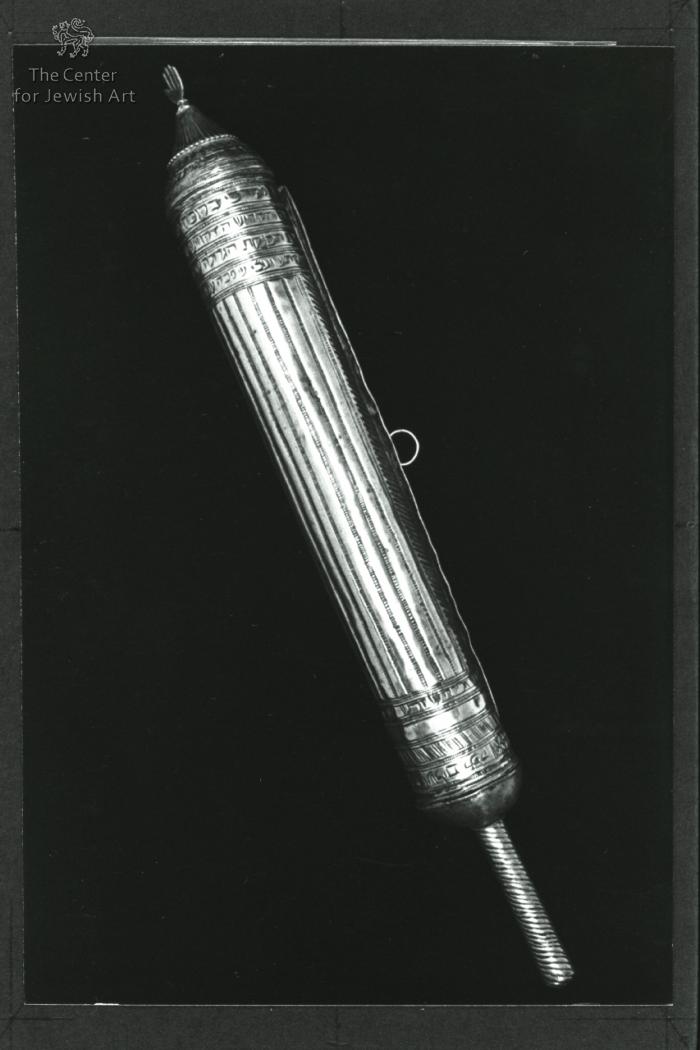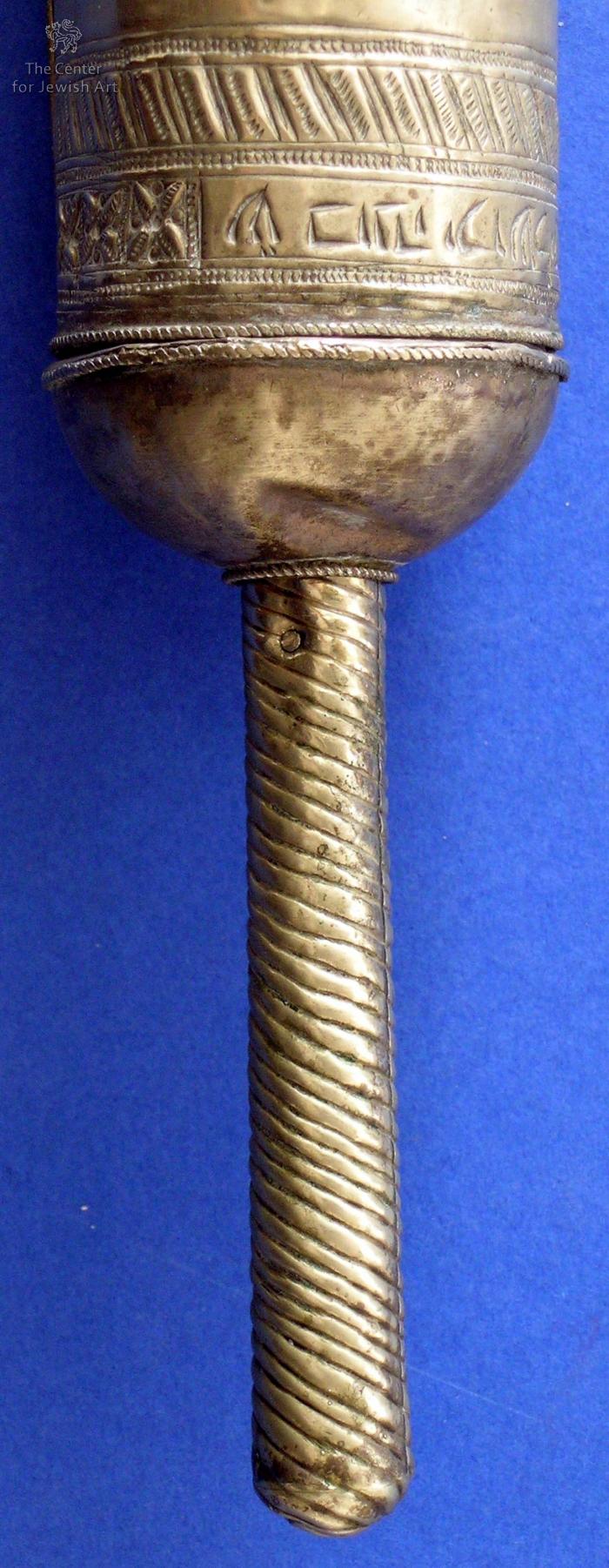Obj. ID: 11606 Esther scroll case, Jerusalem, 1898

sub-set tree:
The following description was prepared by William Gross:
The Scroll of Esther tells the story of the salvation of the Jews of the Persian Empire. Since the Talmudic period it has been customary to write the Book of Esther on parchment in the form of a scroll, and the rules governing its production and writing are basically the same as those for a traditional Torah scroll. It is not known when and under what circumstances artistic embellishment of Esther scrolls began. The earliest extant illuminated Esther scrolls emanate from 16th-century Italy, commissioned by well-to-do Italian Jews. Cylindrical or polygonal cases were often made to house such scrolls, often provided with a crank handle to roll the parchment through a vertical slot. Cases were made of copper, tin, and wood, but fine silver and some ivory cases have survived as well. Such containers for the scroll were mostly produced in Italy, Austria and the Ottoman Empire.
This case for the Esther Scroll was made in late 19th century Jerusalem in Yemenite style for one of the Yemenite synagogues in the old city. Only one known parallel exists, a piece from Yemen which is in the Jewish museum of New York. An additional unusual feature of this object is the hamsa finial, a symbol not commonly used in Yemen. It would appear that this piece is a fusion of the Yemenite style with the local customs of Jerusalem, where the belief in the effects of the evil eye was very strong. Such hamsa finials are found on the top of Rimmonim made in Jerusalem as well.
The dedication records the gift of the Megillah and case to the large synagogue built in Jerusalem on the name of Rashbi Shabazi by one elderly Moshe Chanoch Halevi in 1899.






